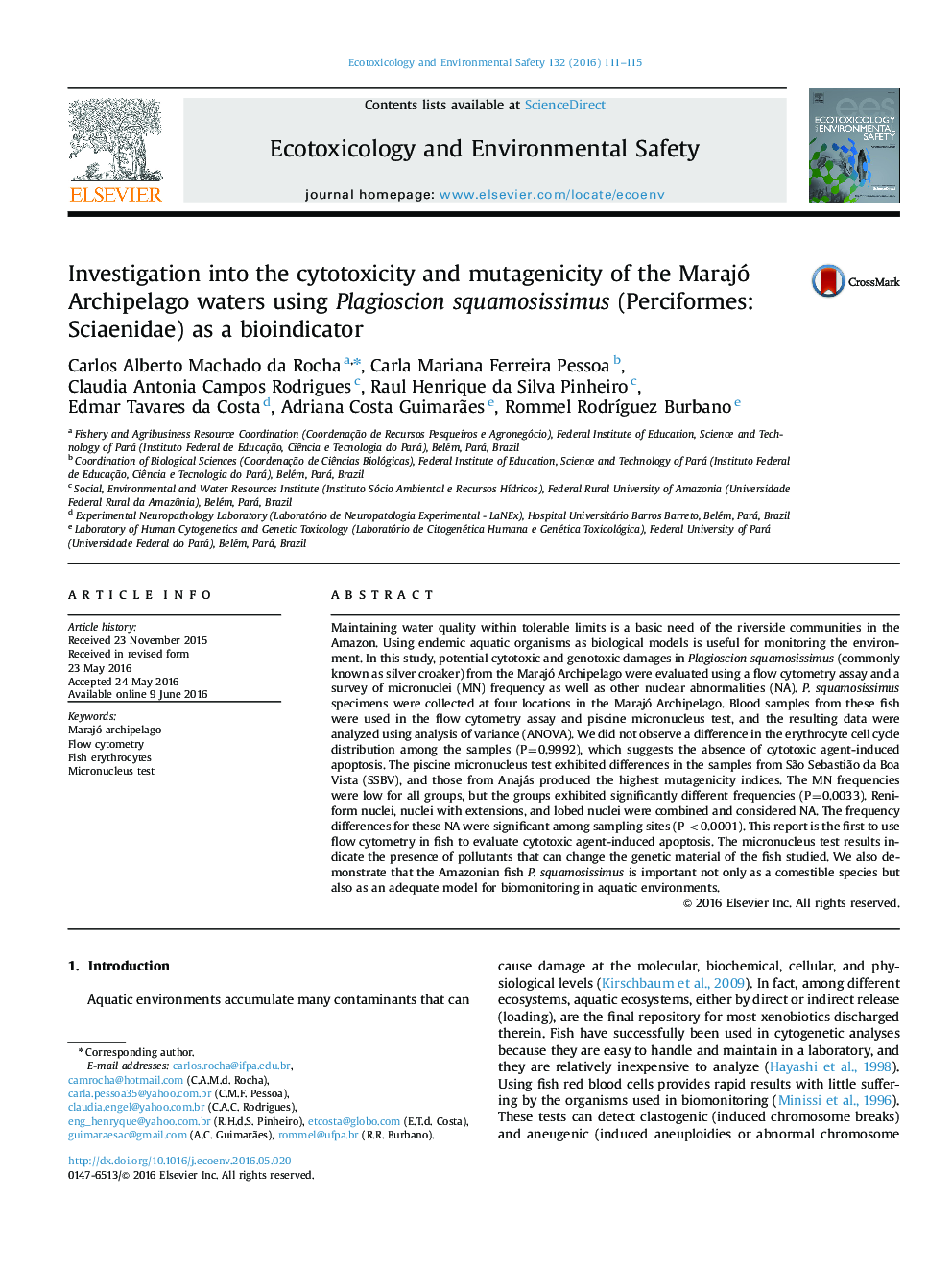| Article ID | Journal | Published Year | Pages | File Type |
|---|---|---|---|---|
| 4419109 | Ecotoxicology and Environmental Safety | 2016 | 5 Pages |
•The cytotoxic and mutagenic effects caused by the Marajó archipelago waters in Plagioscion squamosissimus were evaluated.•There was no difference in the erythrocyte cell cycle distribution among the samples.•The frequencies of MN and other NA were significantly higher in fish from the Marajó archipelago.
Maintaining water quality within tolerable limits is a basic need of the riverside communities in the Amazon. Using endemic aquatic organisms as biological models is useful for monitoring the environment. In this study, potential cytotoxic and genotoxic damages in Plagioscion squamosissimus (commonly known as silver croaker) from the Marajó Archipelago were evaluated using a flow cytometry assay and a survey of micronuclei (MN) frequency as well as other nuclear abnormalities (NA). P. squamosissimus specimens were collected at four locations in the Marajó Archipelago. Blood samples from these fish were used in the flow cytometry assay and piscine micronucleus test, and the resulting data were analyzed using analysis of variance (ANOVA). We did not observe a difference in the erythrocyte cell cycle distribution among the samples (P=0.9992), which suggests the absence of cytotoxic agent-induced apoptosis. The piscine micronucleus test exhibited differences in the samples from São Sebastião da Boa Vista (SSBV), and those from Anajás produced the highest mutagenicity indices. The MN frequencies were low for all groups, but the groups exhibited significantly different frequencies (P=0.0033). Reniform nuclei, nuclei with extensions, and lobed nuclei were combined and considered NA. The frequency differences for these NA were significant among sampling sites (P <0.0001). This report is the first to use flow cytometry in fish to evaluate cytotoxic agent-induced apoptosis. The micronucleus test results indicate the presence of pollutants that can change the genetic material of the fish studied. We also demonstrate that the Amazonian fish P. squamosissimus is important not only as a comestible species but also as an adequate model for biomonitoring in aquatic environments.
